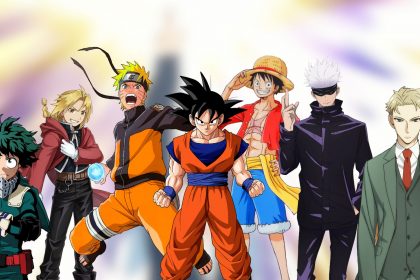Anime and manga are beloved forms of entertainment that have captured the hearts of fans worldwide. While the vibrant visuals and compelling storylines are integral to their appeal, the impact of voice acting should not be overlooked. Voice acting plays a crucial role in bringing characters to life. Voice acting also conveying emotions, and immersing viewers in the world of anime and manga. In this article, we will explore the art of voice acting in anime and manga, discuss the importance of voice casting, examine the challenges of localization and dubbing. This article also highlight memorable voice acting performances, delve into the influence of voice acting on fan culture, and speculate on future trends and innovations in this field.
The Art of Voice Acting in Anime and Manga
Voice acting in anime and manga is a meticulous craft that requires skill, talent, and dedication. Voice actors, also known as seiyuu in Japan, breathe life into characters through their performances. They use their voices to convey emotions, nuances, and personalities, creating a connection between the audience and the fictional world on the screen or page. The art of voice acting goes beyond mere reading of lines; it involves understanding the character’s motivations, backstory, and emotional journey to deliver a compelling performance. By infusing their voices with the essence of the character, voice actors contribute significantly to the overall impact and success of anime and manga.
The Importance of Voice Casting
Voice casting is a crucial aspect of anime and manga production. It involves selecting the most suitable voice actors to portray specific characters, considering factors such as vocal range, tone, and ability to convey the character’s personality. Matching the voice to the character is paramount in creating an immersive experience for the audience. The right voice can bring out the nuances of a character, capturing their essence and making them memorable. Furthermore, voice casting plays a vital role in building character identity. When a voice actor consistently portrays a character over a series or multiple seasons, their voice becomes inseparable from the character’s identity, creating a sense of familiarity and continuity for the audience.
Localization and Dubbing Challenges
One of the challenges in voice acting for anime and manga is localization and dubbing. When anime and manga are translated for international audiences, cultural nuances and references must be carefully adapted to ensure understanding and relatability. Voice actors involved in the dubbing process face the task of preserving the original intent while making the dialogue flow naturally in the target language. It requires a delicate balance between fidelity to the source material and creating an authentic experience for the audience. Localization and dubbing teams work closely to ensure that the essence of the characters and story is maintained. On the other hand, the collaboration should still appealing to the cultural sensibilities of the target audience.
Memorable Voice Acting Performances
Certain anime and manga productions have showcased exceptional voice acting performances that have left a lasting impact on fans. One such example is “Cowboy Bebop,” where Kouichi Yamadera portrayal of Spike Spiegel captured the character’s laid-back charm, wittiness, and underlying melancholy. Kouichi’s voice became synonymous with Spike, elevating the character to iconic status. In the realm of anime films, “Spirited Away” stands out with Rumi Hiiragi’s performance as Chihiro. Her ability to convey Chihiro’s growth from a timid young girl to a determined hero was instrumental in immersing the audience in Hayao Miyazaki’s fantastical world. These performances highlight the power of voice acting in creating memorable and beloved characters.
Further Readings: Anime Studio: A Look at How Anime is Made
The Influence of Voice Acting on Fan Culture
Voice acting has a significant influence on fan culture surrounding anime and manga. Iconic catchphrases, intonations, and vocal quirks become ingrained in the fandom’s lexicon and are often imitated and celebrated. Fans develop a deep attachment to the voices behind their favorite characters, forging a connection that goes beyond the screen or page. Voice actors themselves have become celebrities, attending conventions, engaging with fans on social media, and even releasing music albums. Their popularity and influence extend beyond the roles they portray. Those factors making them an integral part of the anime and manga community.
Future Trends and Innovations in Voice Acting
As technology continues to advance, voice acting in anime and manga is also evolving. One notable trend is the emergence of virtual voice actors. These are computer-generated voices that can convincingly mimic human speech. Those computer aided voice allows for unique and customizable performances. Virtual voice actors offer new possibilities for character creation and storytelling. Another innovation on the horizon is real-time voice synthesis. This innovation allows voice actors manipulate their voices in real-time during recording sessions. This technology opens up new avenues for experimentation and creativity. Voice actors may explore a wider range of characters and performances.
Conclusion
Voice acting is an essential element of the anime and manga industry. It contributes to the immersive experience and emotional connection between fans and the fictional worlds they love. Voice actors play a pivotal role in the success of anime and manga. They are bringing characters to life to conveying emotions and nuances. The art of voice casting, the challenges of localization and dubbing, and the influence on fan culture all highlight the significance of voice acting in this medium. As technology advances, we can expect further innovations in voice acting. Technology which expanding the possibilities for creating captivating and unforgettable performances in anime and manga.













